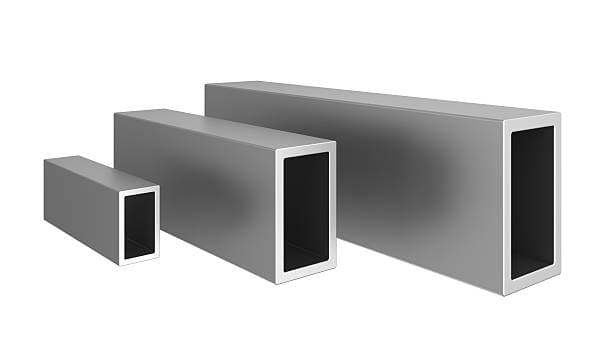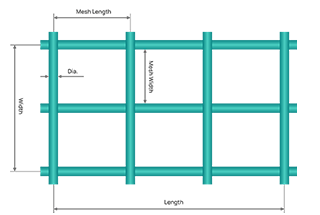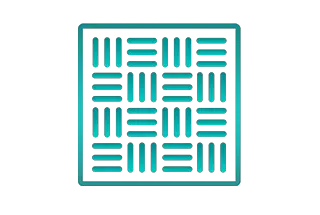
Have you ever needed to find the exact weight of a rectangular steel tube for your project? This article breaks down the process of calculating it, from understanding the key formula to using a handy online calculator. Whether you’re a seasoned engineer or just starting out, you’ll learn how to determine the weight of various tube sizes, enhancing your precision in design and manufacturing. Get ready to streamline your workflow with these essential calculations.

The weight calculation formula of rectangular tube is:
2[(a-d-2r+π(r+d/2)/2+(b-d-2r+π(r+d/2)/2)x7.85d(kg)
a, b is the length and width of the rectangular tube (m), r is the arc radius of the four corners of the inner cavity of the tube (m), and d is the wall thickness (mm).
According to GB/T 3094-2012, the standard length range for rectangular steel tubes typically falls between 2000mm and 9000mm. These tubes are commonly supplied in fixed or double lengths to accommodate various industrial applications.
In the market, rectangular steel tubes are typically supplied based on either actual weight or theoretical weight. When using theoretical weight calculations, the industry-standard density of 7.85g/cm³ is assumed for steel. This standardized approach allows for consistent estimations across different manufacturers and suppliers.
To accurately determine the weight of a rectangular steel tube, you can utilize the following weight calculator. This tool incorporates precise formulas based on the tube’s dimensions and material properties, providing a reliable estimate for planning and procurement purposes.
It’s important to note that while this calculator offers a good approximation, factors such as manufacturing tolerances, surface finish, and specific alloy composition may cause slight variations in the actual weight. For critical applications requiring exact measurements, it’s advisable to consult with the manufacturer or perform physical measurements.
Understanding the weight of rectangular steel tubes is crucial for various aspects of engineering and construction, including:
Related Tool: Steel Weight Calculator
This comprehensive weight chart provides accurate weight calculations for a range of rectangular tube sizes and wall thicknesses, enabling engineers and fabricators to make informed decisions.
The chart below presents the weight per meter (kg/m) for common rectangular tube sizes, with wall thicknesses ranging from 1.2mm to 8mm.
Note: Weights are calculated based on steel with a density of 0.2836 lb/in³ (7.85 g/cm³).
| Size (mm) | Weight | ||
| b1(length) | b2(width) | t(thickness) | kg/m |
| 50 | 25 | 1.2 | 1.37 |
| 1.5 | 1.7 | ||
| 30 | 2.5 | 2.94 | |
| 3 | 3.49 | ||
| 4 | 4.52 | ||
| 60 | 30 | 2.5 | 3.34 |
| 3 | 3.96 | ||
| 4 | 5.15 | ||
| 40 | 2.5 | 3.73 | |
| 3 | 4.43 | ||
| 4 | 5.78 | ||
| 70 | 50 | 3 | 5.37 |
| 4 | 7.03 | ||
| 5 | 8.64 | ||
| 80 | 40 | 2.5 | 4.51 |
| 3 | 5.37 | ||
| 4 | 7.03 | ||
| 5 | 8.64 | ||
| 60 | 3 | 6.31 | |
| 4 | 8.29 | ||
| 5 | 10.21 | ||
| 90 | 40 | 3 | 5.84 |
| 4 | 7.66 | ||
| 5 | 9.42 | ||
| 50 | 3 | 6.31 | |
| 4 | 8.29 | ||
| 5 | 10.21 | ||
| 60 | 3 | 6.78 | |
| 4 | 8.92 | ||
| 5 | 10.99 | ||
| 100 | 50 | 3 | 6.78 |
| 4 | 8.92 | ||
| 5 | 10.99 | ||
| 120 | 60 | 3 | 8.2 |
| 4 | 10.8 | ||
| 5 | 13.35 | ||
| 6 | 15.83 | ||
| 80 | 3 | 9.14 | |
| 4 | 12.06 | ||
| 5 | 14.92 | ||
| 6 | 17.71 | ||
| 140 | 80 | 4 | 13.31 |
| 5 | 16.48 | ||
| 6 | 19.59 | ||
| 150 | 100 | 4 | 15.2 |
| 5 | 18.84 | ||
| 6 | 22.42 | ||
| 8 | 29.39 | ||
| 160 | 80 | 4 | 14.57 |
| 5 | 18.05 | ||
| 6 | 21.48 | ||
| 8 | 28.13 | ||
| 180 | 100 | 4 | 17.08 |
| 5 | 21.2 | ||
| 6 | 25.25 | ||
| 8 | 33.16 | ||
| 200 | 100 | 4 | 18.34 |
| 5 | 22.77 | ||
| 6 | 27.13 | ||
| 8 | 35.67 | ||
Rectangular tube is a lightweight, thin-walled structural element with a hollow rectangular cross-section, commonly referred to as a cold-formed steel section. It combines high strength-to-weight ratio with versatility, making it ideal for various structural and mechanical applications.
Typically manufactured from Q235 grade steel, rectangular tubes can be produced using either hot-rolled or cold-rolled steel strip or coil as the base material. The choice between hot-rolled and cold-rolled steel affects the final properties and surface finish of the tube.
The manufacturing process involves continuous cold forming, where the flat steel is progressively bent into the desired rectangular shape through a series of roll-forming stages. The open seam is then joined using high-frequency welding, creating a seamless appearance and uniform strength around the perimeter.
While standard rectangular tubes have relatively thin walls, hot-rolled extra thick wall variants are also available. These thicker-walled tubes often exhibit superior corner radii consistency and edge flatness compared to their cold-formed counterparts, sometimes even surpassing the dimensional stability of resistance welded cold-formed rectangular tubes.
The dimensional accuracy, surface quality, and mechanical properties of rectangular tubes can be further tailored through post-forming treatments such as heat treatment, surface finishing, or additional forming operations to meet specific application requirements.

Steel tubes can be classified into two main categories: seamless tubes and welded tubes. This classification applies to rectangular tubes as well, which are a subset of structural steel profiles.
Seamless rectangular tubes are manufactured without any welding process, resulting in a uniform structure throughout. They are produced through various methods:
Welded rectangular tubes are fabricated by forming flat steel strips or plates into a rectangular shape and welding the seam. They can be further categorized based on their manufacturing process:
1. Electric Resistance Welded (ERW) rectangular tubes:
2. Submerged Arc Welded (SAW) rectangular tubes: Employing a flux to protect the weld pool, resulting in high-quality, large-diameter tubes.
3. Laser Welded rectangular tubes: Utilizing high-power lasers for precise, high-speed welding with minimal heat-affected zones.
4. Gas Tungsten Arc Welded (GTAW) rectangular tubes: Offering excellent weld quality for specialized applications.
5. Furnace welded rectangular tubes: Produced by heating the edges to welding temperature and forging them together, typically for smaller sizes.
Furthermore, welded rectangular tubes can be classified based on their weld seam configuration:
Each type of rectangular tube offers specific advantages in terms of strength, cost-effectiveness, and suitability for various applications in construction, automotive, and industrial sectors.








